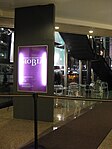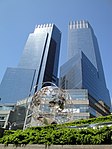New York Institute of Technology
1910 establishments in New York (state)Educational institutions established in 1910Engineering universities and colleges in New York (state)History of computingIncomplete lists from December 2013 ... and 9 more
New York Institute of TechnologyPrivate universities and colleges in New York CitySchools in Nassau County, New YorkScience and technology in New York (state)Technological universities in the United StatesUniversities and colleges in British ColumbiaUniversities and colleges in ManhattanUniversities and colleges on Long IslandWikipedia indefinitely semi-protected pages

The New York Institute of Technology (NYIT or New York Tech) is a private research university founded in 1955. It has two main campuses in New York—one in Old Westbury, on Long Island, and one in Manhattan. Additionally, it has a cybersecurity research lab and a biosciences, bioengineering lab in Old Westbury, as well as campuses in Arkansas, United Arab Emirates, China, and Canada. The New York Institute of Technology Computer Graphics Lab is an important environment in the history of computer graphics and animation, as founders of Pixar and Lucasfilm began their research there.
Excerpt from the Wikipedia article New York Institute of Technology (License: CC BY-SA 3.0, Authors, Images).New York Institute of Technology
West 61st Street, New York Manhattan
Geographical coordinates (GPS) Address Website External links Nearby Places Show on map
Geographical coordinates (GPS)
| Latitude | Longitude |
|---|---|
| N 40.769719 ° | E -73.98247 ° |
Address
New York Institute of Technology
West 61st Street
10023 New York, Manhattan
New York, United States
Open on Google Maps






